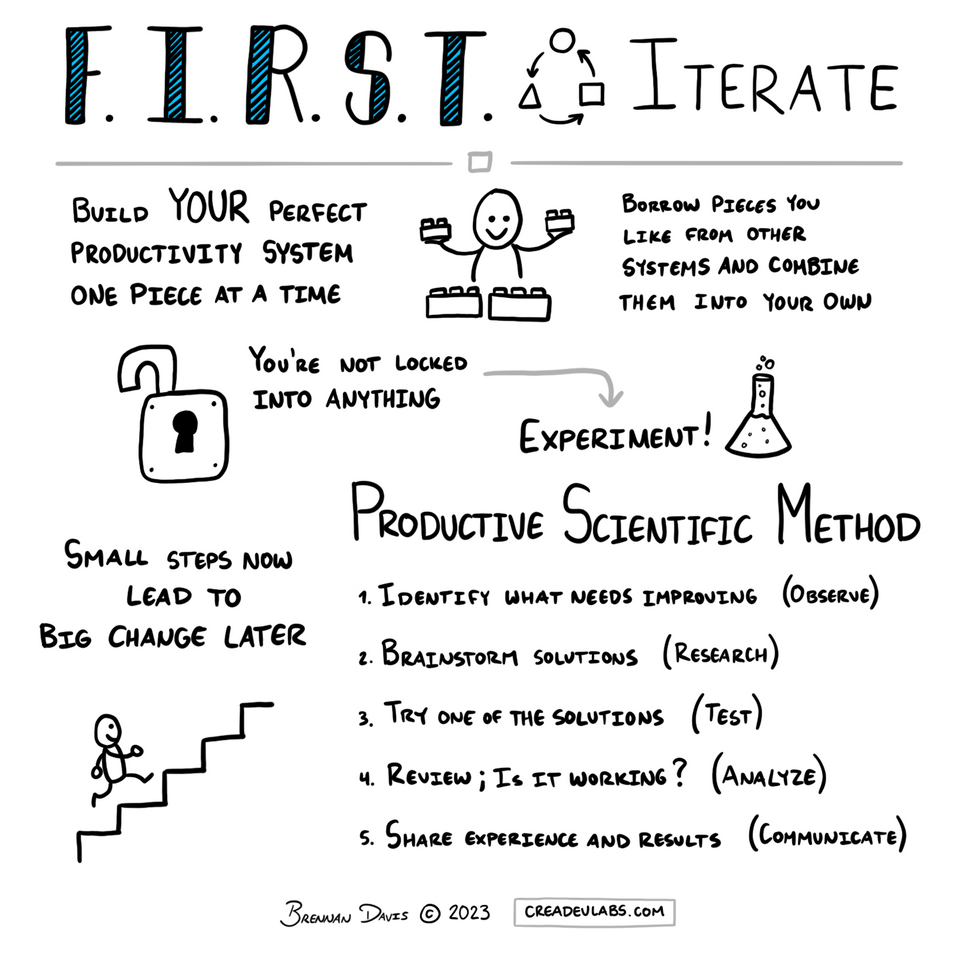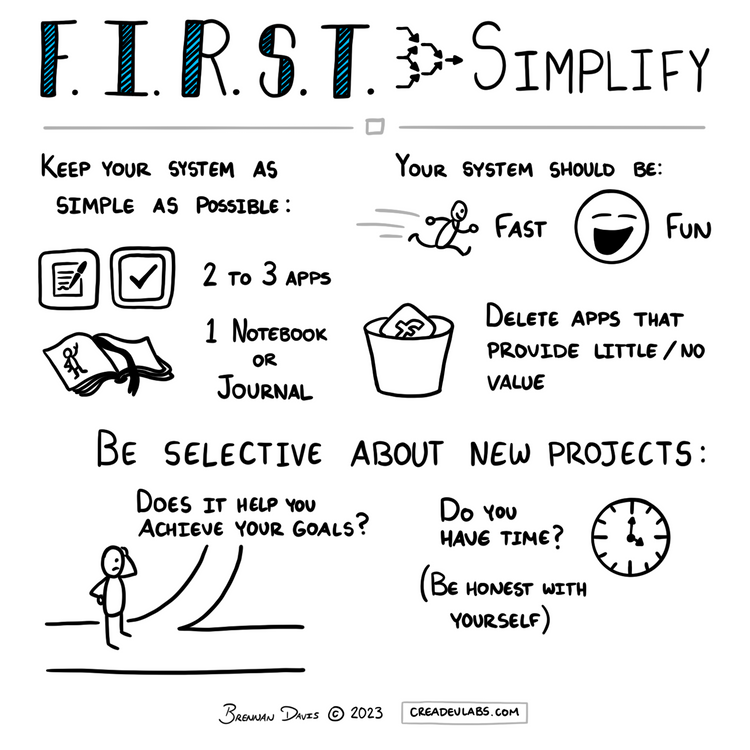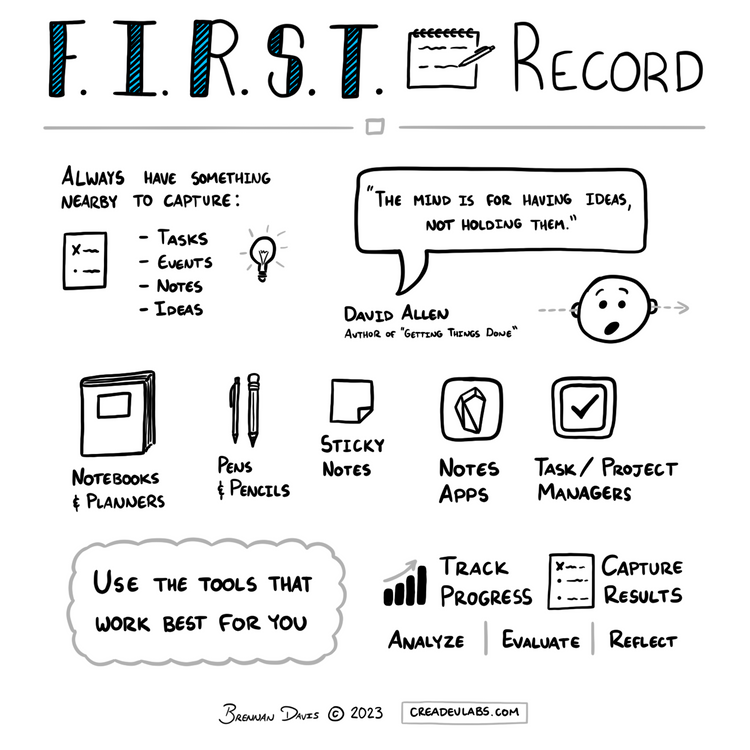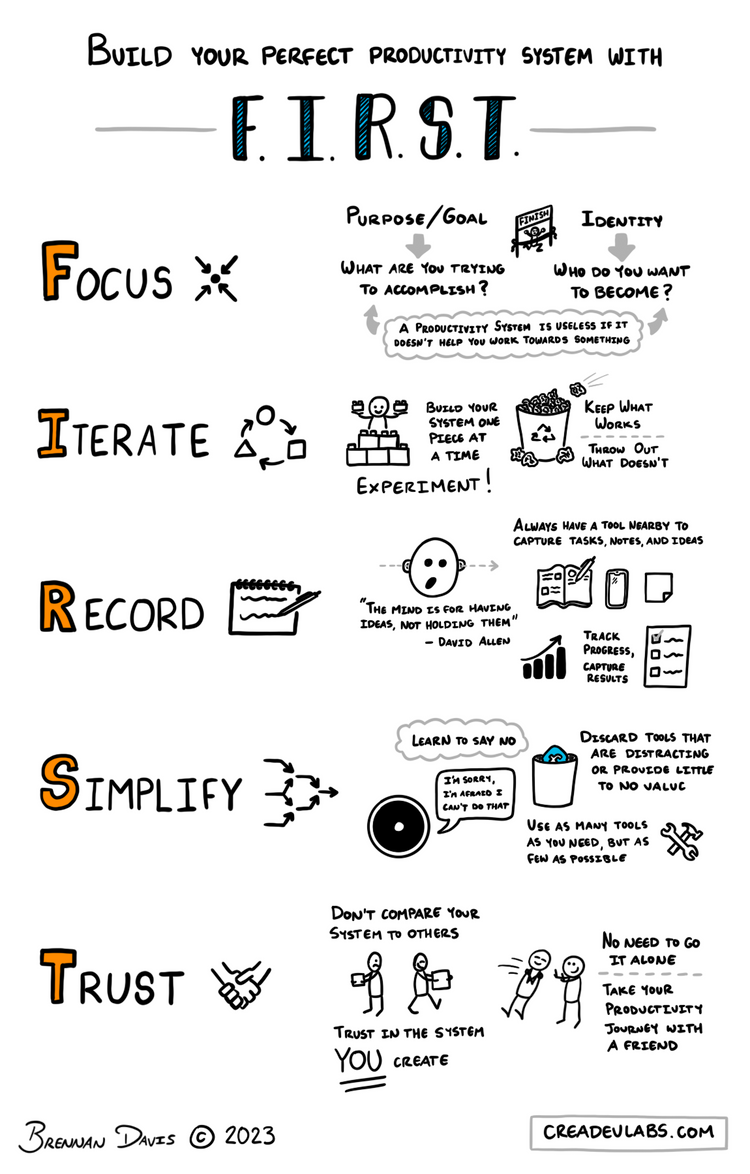Iterate: Craft Your Perfect Productivity System One Piece at a Time

“Adapt what is useful, reject what is useless, and add what is specifically your own”
-- Bruce Lee
In the last article in this series on Focus, we discovered why you need a productivity system based on who you want to be and what you'd like to do in the future. With the next principle, Iterate, you start to get into the action.
As Walt Disney said:
"The best way to get started is to stop talking and begin doing!"
So let's get to work building your productivity system!
There are a few key apps or tools you'll need as part of your productivity system:
- A task manager
- A place to take notes
- A calendar
If you already know how you like to work you can search for tools that fit your preferred mode of working.
A quick reminder of some organizational styles:
- Lists
- Tables
- Kanban Boards
- Mind Maps
- Flow Charts
- Sketches/doodles
If you don’t yet know how you work best, try a few apps with different approaches to see what you like the most.
Need help finding productivity tools? Check out over 200+ options at https://toolfinder.xyz
After you've found a tool that sounds interesting, try it out for at least 30 days. You'll want to give it a good chunk of time to put it through its paces, see if it's the right tool for you.
Once you're happy with a tool, continue making improvements by running experiments.
Be bold and come up with your own ideas of things to try. You don't have to stick with what the experts say to do. Just because something has been "scientifically proven" doesn't mean it'll work for you.
What makes someone a scientist? They study a topic by running experiments on it.
You can be the scientist that makes your productivity system "scientifically proven".
I've done this for years, and the parts of my system I've run experiments on are the most effective pieces. You can use things that experts suggest, but you do have to test them out for yourself.
Just as scientists do, you can use the Scientific Method to run your experiments:
- Make an observation / ask a question
- Form a hypothesis
- Test the hypothesis
- Analyze results and come to a conclusion
- Communicate findings
With some slight changes in wording, you end up with the Productive Scientific Method:
- Observe something that isn't working well in your system or that you'd like to improve
- Brainstorm ideas on how to improve it
- Try one of the ideas for a period of time
- Conduct a review; is it working? Come to a conclusion one way or the other
- Share your experience and results with others
That last step is optional, but highly recommended. I've learned so much by sharing my experiments with others. They'll often share their ideas and experiments with you in return.
But I'm getting ahead of myself. We'll talk more about accountability partners in the article on Trust.
Crafting a productivity system is like building with Lego. Lego produces sets with specific instructions to build them a certain way. But there's nothing stopping you from breaking those sets apart, combining them with pieces from other sets, and creating something unique to you.
In the same way, you can borrow pieces from any productivity system and combine them in unique ways. It's a rewarding and satisfying feeling when you feel the pieces click into place.
In the next article, I'll talk about the number one habit you should form to be the most productive you can be: Record.






Member discussion